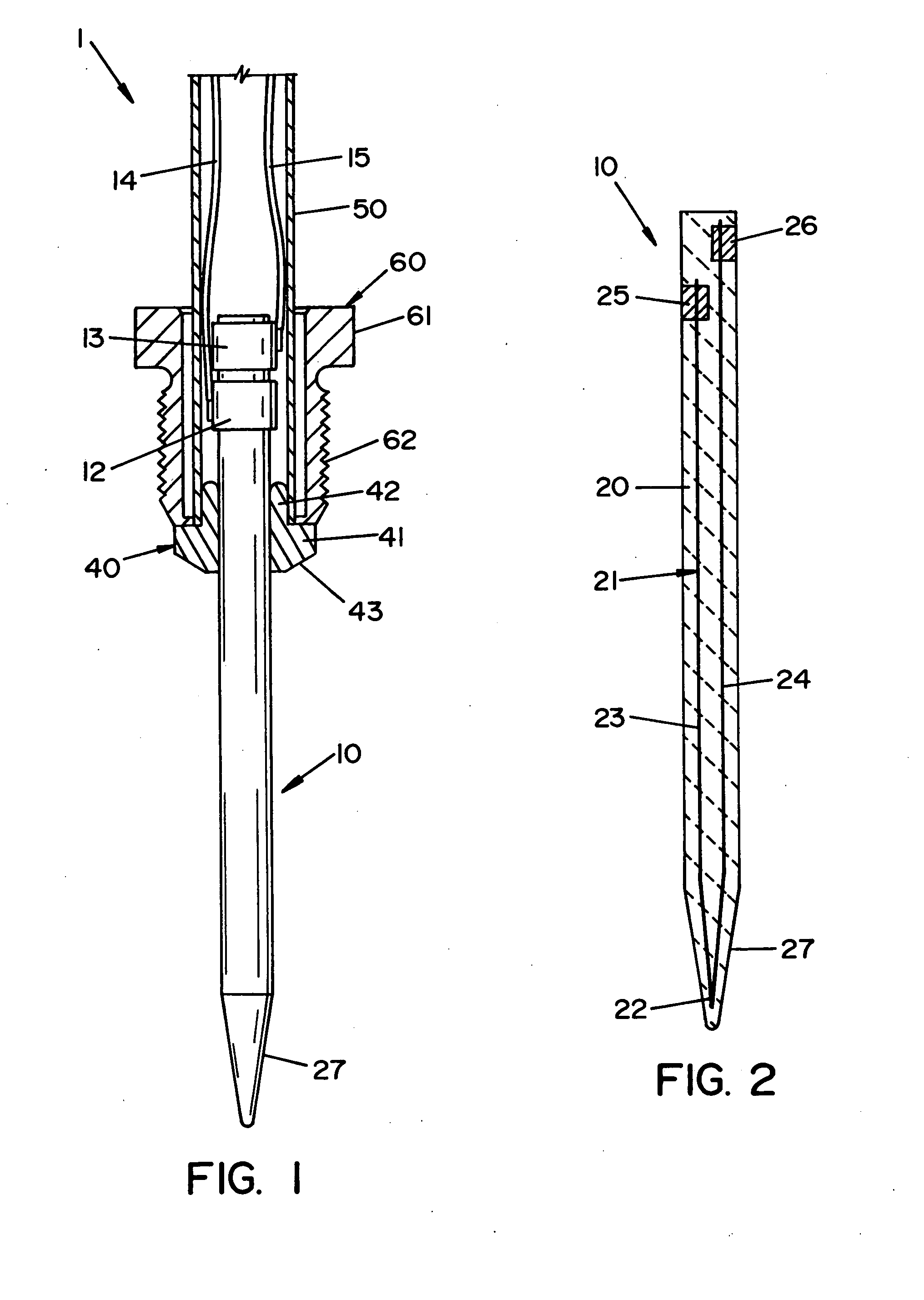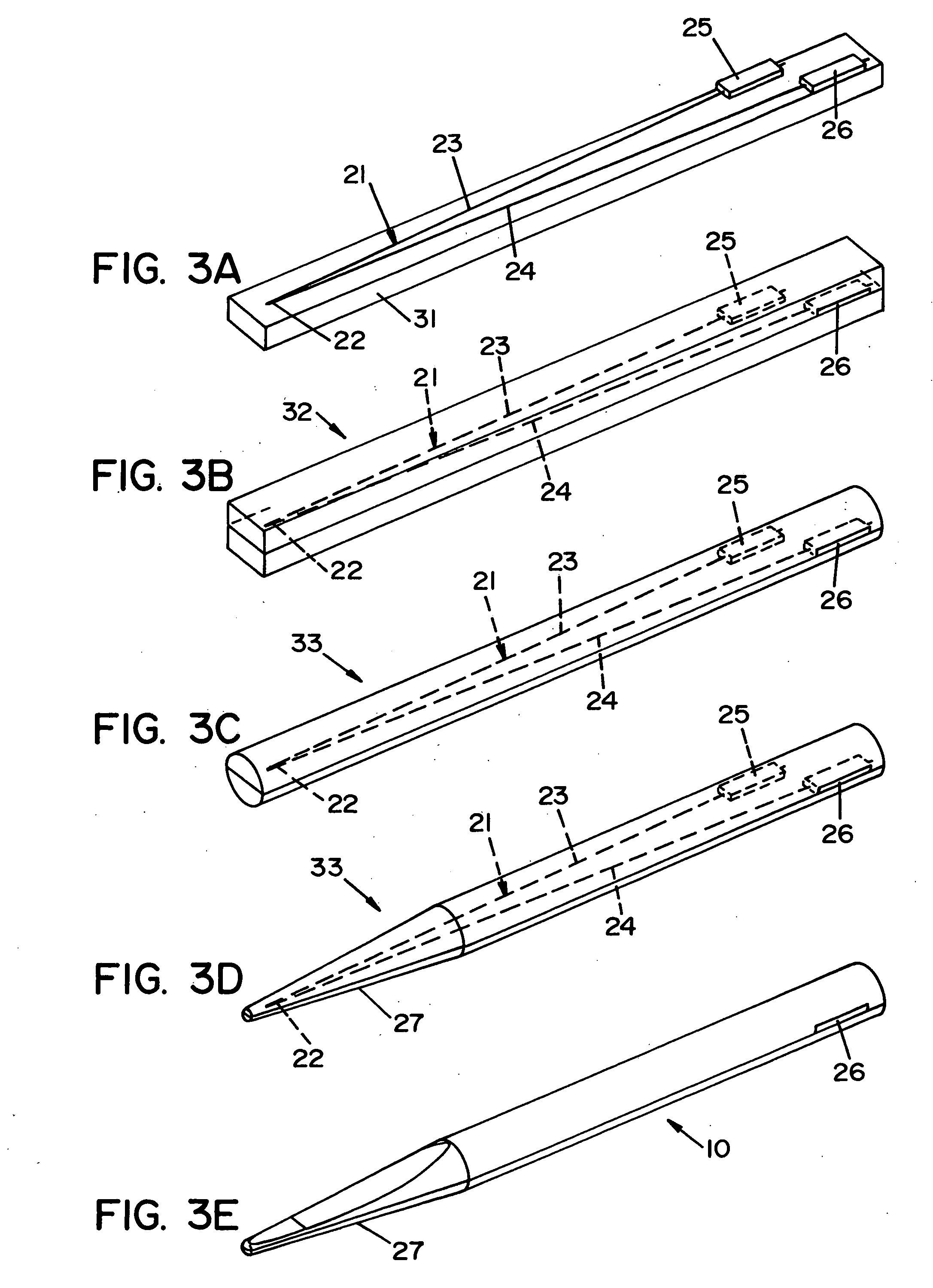Temperature sensor element and method of manufacturing the same
a technology of temperature sensor and manufacturing method, which is applied in the direction of instruments, heat measurement, transportation and packaging, etc., can solve the problems of limiting the improvement of responsiveness, affecting the effect of output, and the responsiveness of the time of temperature detection, so as to improve the thermal conductivity between the sintered body and the thermocouple, improve the adhesion, and improve the effect of adhesion
- Summary
- Abstract
- Description
- Claims
- Application Information
AI Technical Summary
Benefits of technology
Problems solved by technology
Method used
Image
Examples
Embodiment Construction
[0045]The embodiment of the present invention will be described with reference to the drawings.
[0046]First, a partially sectional view of a temperature sensor 1 having a temperature sensor element 10 according to an embodiment of the present invention is shown in FIG. 1.
[0047]It is noted that the temperature sensor 1 is used for a temperature detection of an exhaust gas. The temperature sensor 1 is located at both front and rear sides of an exhaust port of an automobile, particularly, an exhaust gas after treatment device of a diesel engine. A front end portion of the temperature sensor element 10 is disposed in the exhaust port where an exhaust gas flows.
[0048]As shown in FIG. 1, the temperature sensor 1 is comprised of the temperature sensor element 10, a flange member 40, a joint member 50 and a nut member 60.
[0049]The lengthy temperature sensor element 10 extends in an axial direction and has therein a thermocouple 21 (refer to FIG. 2) for detecting a temperature. Further, the f...
PUM
| Property | Measurement | Unit |
|---|---|---|
| porosity | aaaaa | aaaaa |
| porosity | aaaaa | aaaaa |
| temperature | aaaaa | aaaaa |
Abstract
Description
Claims
Application Information
 Login to View More
Login to View More - R&D
- Intellectual Property
- Life Sciences
- Materials
- Tech Scout
- Unparalleled Data Quality
- Higher Quality Content
- 60% Fewer Hallucinations
Browse by: Latest US Patents, China's latest patents, Technical Efficacy Thesaurus, Application Domain, Technology Topic, Popular Technical Reports.
© 2025 PatSnap. All rights reserved.Legal|Privacy policy|Modern Slavery Act Transparency Statement|Sitemap|About US| Contact US: help@patsnap.com



